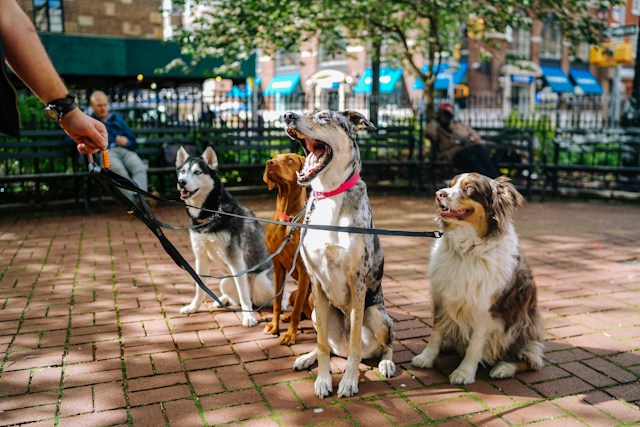How to Properly Condition a Show Dog for the Ring?

Every dog lover knows that seeing their canine companion perform well in a show ring is a moment of immense pride. However, the path to excellence in the show ring isn’t just about the breed or pedigree of your dog. Rather, it requires diligent training, a keen understanding of your dog’s behavior, and a consistent work schedule. In this guide, you will learn how to professionally condition your show dog for the ring.
Understanding the Basics of Show Dog Training
Before you engage in any specific training regimen for your dog, it’s essential to understand the basics of show dog training. The American Kennel Club (AKC) has several guidelines and rules for dogs participating in shows. It’s crucial to comprehend these guidelines as they will influence your training program.
Sujet a lire : What Are the Best Strategies for Crate Training a Nervous Beagle?
First and foremost, obedience is key. A show dog needs to respond to commands promptly and reliably. This obedience doesn’t just extend to commands like "sit" or "stay," but also to the dog’s behavior in the show ring. A dog that behaves well in the ring, showing patience, attentiveness, and calmness, stands a much higher chance of catching the judge’s eye.
Moreover, each breed has a specific "stack" or "stand" position that is deemed ideal by the AKC. This stack position showcases the dog’s best physical attributes and is a significant aspect of any show ring performance.
A voir aussi : What’s the Best Way to Train a Dog to Stop Counter-Surfing?
Starting Your Puppy on the Path to Show Ring Excellence
While it is possible to train adult dogs for show rings, starting with a puppy often yields better results. This is because puppies are like blank slates – they have not yet adopted any behaviors or habits that might need to be unlearned. Moreover, puppies typically have a higher drive to please their owners, which can be leveraged in their training.
Start by instilling basic obedience commands such as "sit," "stay," and "come." Make sure to reward your puppy generously for obeying these commands, fostering a positive association with obedience. As your puppy masters these commands, start introducing the stack position appropriate for your dog’s breed. Remember, patience and consistency are key here. Don’t expect your puppy to perfect the stack position immediately.
Conditioning and Training Techniques
Once your dog has mastered the basics, it’s time to step up the training regimen. A crucial aspect of this is conditioning.
Conditioning is a process where you teach your dog to associate a specific stimulus with a particular outcome. For example, a clicker is often used in conditioning. The dog learns to associate the sound of the clicker with a reward, which in turn encourages them to repeat the behavior that led to the click.
In terms of show ring readiness, conditioning can be used to reinforce the stack position, to teach the dog to move gracefully in the ring, and to accustom the dog to the sights and sounds of a real show. Regular practice in a mock show setting can also be very beneficial. This not only prepares your dog for the show ring but also helps you, as a handler, to understand your dog’s reactions and behaviors under show conditions.
The Art of Presentation
Finally, a show dog’s performance isn’t just about obedience or the perfect stack. It’s also about presentation. In the show ring, every minute detail matters – from the way your dog moves to the shine on their coat.
A well-groomed dog will always score higher with judges. Regular grooming not only enhances your dog’s physical appearance but also contributes to their overall health and wellbeing. Also, ensure your dog is at a healthy weight. An overweight or underweight dog not only presents health risks but can also affect their performance in the ring.
Training your dog to move gracefully in the ring is also crucial. This isn’t just about speed, but about the dog’s gait and posture. A dog that can trot around the ring, maintaining their stack position, while looking relaxed and happy, is far more likely to impress judges than a dog that seems stressed or uncomfortable.
In conclusion, conditioning a show dog for the ring is a detailed process that requires patience, consistency, and a deep understanding of your dog’s breed and individual behaviors. However, the rewards of seeing your dog perform well in the ring make all the hard work worthwhile.
Advanced Tricks and Commands for Show Ring Success
Venturing beyond the basics, the training of your show dog should also include a spectrum of advanced tricks and commands. This ensures your dog stands out in the ring and adheres to the most demanding standards set by the Kennel Club.
One of these advanced techniques is the "free stack." This is a command that teaches your dog to naturally position themselves in the perfect stack without any physical manipulation from you. To teach the "free stack," you should first define the desired position through rewarding your dog each time they naturally assume that position. Gradually, your dog will associate the command "free stack" with this position. Remember, patience and consistency are still vital. The free stack is an advanced technique and may take time for your dog to master.
Another effective strategy is to incorporate dog sports into your training regimen. Dog sports such as agility, obedience, and rally can improve your dog’s responsiveness to commands while providing essential physical conditioning. Especially for breeds like the German Shepherd, these sports can be a fun and challenging addition to their training.
Remember that the judge will not only assess your dog’s ability to follow commands but also their overall demeanor in the ring. A dog that displays enthusiasm, confidence, and a willingness to please is far more likely to stand out.
The Importance of Socialization and Adaptability
A crucial yet often overlooked aspect of preparing a show dog for the ring is socialization. Whether it’s a mixed breed or purebred, every show dog needs to be comfortable around other dogs, people, and the array of distractions found at a dog show.
Start by gradually introducing your dog to new people and environments. Make every interaction positive by rewarding your dog for calm and confident behavior. This can be done through treats, praise, or toys.
Exposing your dog to different environments will also prepare them for the varying conditions of a dog show. Take your dog to parks, pet stores, and busy streets, where they can experience different sights, sounds, and smells.
In addition to this, you can also simulate the environment of a dog show at home. Set up a mock ring with distractions such as loud music or cheering, and practice your dog’s routine. This will help acclimate your dog to the bustling environment of a show ring.
Conclusion: Conditioning Your Show Dog For Success
Conditioning a show dog for the ring is a multi-faceted process. It’s not just about teaching your dog to "sit" or "stay". It involves in-depth understanding of your dog’s breed, their individual behaviors, and the standards set by the American Kennel Club.
Advanced obedience commands, proper presentation, and socialization are all crucial elements of this process. Furthermore, understanding how to cultivate a positive emotional state in your dog will improve their overall performance in the ring.
Nevertheless, despite the intricacies, the journey of preparing your dog for the show ring can be an incredibly rewarding experience. It strengthens the bond between you and your dog, and nothing can match the pride you feel when your canine companion shines in the ring.
Remember, patience, consistency, and a deep understanding of your dog’s needs are the most critical aspects of conditioning a show dog for the ring. With these in mind, you are well on your way to success in the dog show world.
